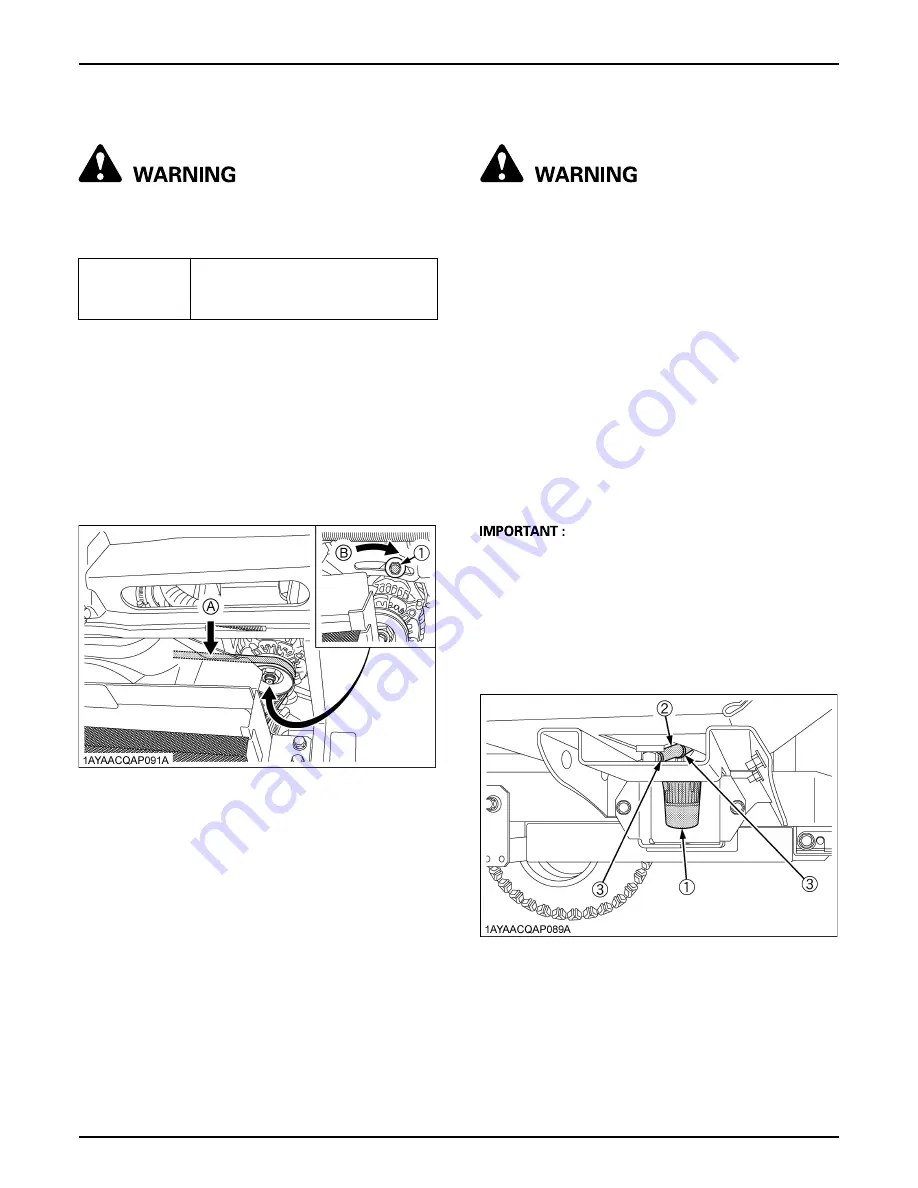
63
PERIODIC SERVICE
B
Adjusting Alternator Belt Tension
To avoid serious injury:
A
Be sure to stop the engine before checking belt
tension.
1. Park the vehicle on a flat surface, open the seat,
remove utility box and maintenance cover.
2. Stop the engine.
3. Apply moderate thumb pressure to belt between
pulleys.
4. If tension is incorrect, loosen the alternator mounting
bolts and, using a lever placed between the alternator
and the engine block, pull the alternator out until the
deflection of the belt falls within acceptable limits.
5. Replace alternator belt if it is damaged.
B
Checking Fuel Line and Fuel Filter
To avoid serious injury:
A
Be sure to stop the engine and remove the key
when attempting to make the following checks
and changes.
A
Never fail to check the fuel lines periodically.
The fuel lines are subject to wear and aging.
Fuel may leak out onto the running engine,
causing a fire.
The fuel line connections should be checked annually or
every 100 service hours, whichever comes first.
1. Park the vehicle on a flat surface, raise the cargo bed,
mount the safety support and shut off the engine.
2. The fuel line is made of rubber and ages regardless of
service period.
3. If the fuel line and clamps are found to be damaged or
deteriorated, replace them.
4. Check fuel filter, if it is clogged by debris or
contaminated with water, replace it.
A
When the fuel line is disconnected for maintenance or
repair, close both ends of the fuel line with a piece of
clean cloth or paper to prevent dust and dirt from
entering. In addition, particular care must be taken not
to admit dust and dirt into the fuel pump. Entrance of
even a small amount of dust or dirt cause premature
wear and malfunction of the fuel pump and injector
components.
Proper
alternator belt
tension
A deflection of between 7 to 9 mm
(0.28 to 0.34 in.) when the belt is
pressed in the middle of the span.
(1) Bolt
(A) Check the belt tension
(B) To tighten
(1) Fuel filter
(2) Fuel line
(3) Pipe clamp
Summary of Contents for RTV-X1120D
Page 10: ......
Page 16: ...SAFE OPERATION 6 8 DANGER WARNING AND CAUTION LABELS ...
Page 17: ... 7 SAFE OPERATION ...
Page 18: ...SAFE OPERATION 8 ...
Page 19: ... 9 SAFE OPERATION ...
Page 20: ...SAFE OPERATION 10 ...
Page 22: ......
















































